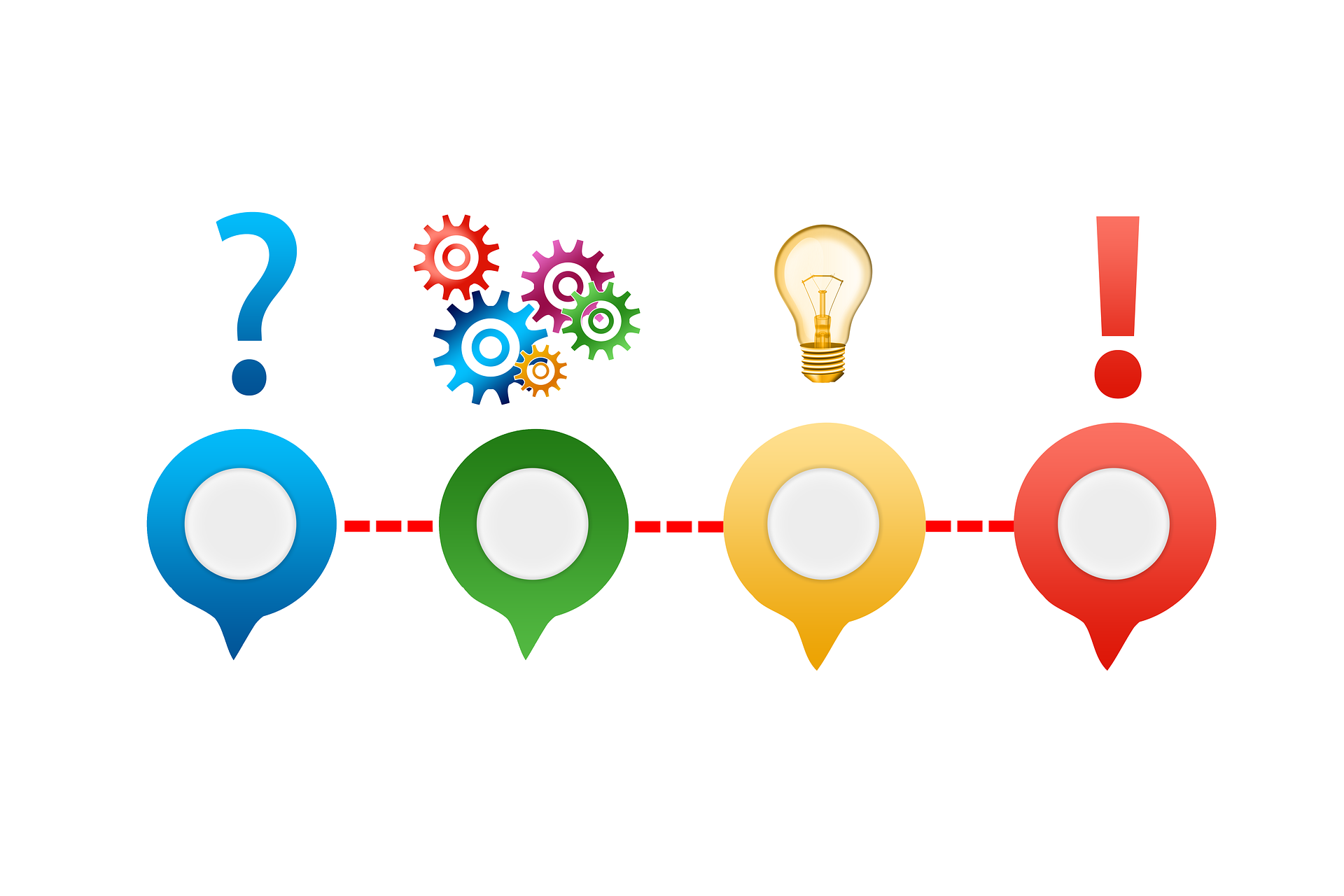
If you're like just about everybody else in the world, you probably have a variety of different goals and aspirations. You might not even think of them as “goals,” but everyone can think of certain things in their life that they want to change or achieve.
These include things you'd like to learn, activities you'd like to do, and career milestones you'd like to reach. Your goals can also include things you'd like to improve about yourself, such as your exercise habits, your sleeping schedule, or your ability to stick to a routine.

If you have a chronic lung disease like COPD, goal-setting can also be an effective tool for managing your disease. By helping you establish better habits related to your physical, social, and mental health, setting goals can help you live a happier, healthier life with COPD.
In fact, doctors of patients with COPD often recommend that their patients set goals for healthy lifestyle changes like losing weight, getting more exercise, or quitting smoking. If you can push yourself to achieve those goals, it can make a significant difference in your symptoms, your physical endurance, and your risk for serious health complications.
That's why, in this post, we're going to show you how to use goal-setting techniques to improve your health and overall wellness while living with a chronic lung condition like COPD. We'll teach you how to create goals that are smart, effective, and guide you toward success.

We'll show you how to define your goals clearly and flesh them out in a way that makes it easy to plan and track your progress. Then, we'll show you how to use those goals as a roadmap to achieving—and maintaining—a better quality of life with COPD.
Goal-Setting for COPD
As just about anyone living with severe COPD can tell you, COPD is a disease that can impact every part of your life. It can affect your energy, your mobility, your daily routine, and even your mental and emotional health.
That's why goal-setting is so important; it allows you to take back control of your life and adjust to the many changes that COPD brings. It can give you that extra edge you need attain the things you want in life in spite of all the ways that COPD can make things more difficult.
Most importantly, knowing how to set effective goals can help you make important habit changes that are vital for maintaining your health and managing your disease. That includes things like eating healthy, quitting smoking, and keeping up with your COPD treatments; a good goal-setting strategy can make all of these things much easier to achieve.
The Benefits of Goal-Setting

It's one thing to know what you want or what you need, but it's quite another thing to actually be able to get there. That's the point of goal-setting: to write down all the things you'd like to (or need to) do in a way that makes them easier to reference and work toward.
Essentially, goal-setting is a method for clarifying your long-term wants and needs and breaking them down into simple steps. It's a useful structure for turning the ideas in your head into practical goals that you can take action on.
The process of goal-setting forces you to think about your goals from a different perspective and come up with strategies you can use to make progress. It also steers you toward action, by acting as a roadmap to guide you through the steps to meet your goals.
Here are some of the main benefits of goal-setting (pdf link):
- Improved motivation
- Improved self-confidence and self-image
- Increased chance of reaching your goals
- Helps you set priorities and identify what's important to you
- Helps you identify your strengths and weaknesses
- Helps you track your progress and build on success
- Helps you focus on what's realistic and what you have power to change
- Serves as a guideline for how to achieve your goals
Goal-setting can be particularly helpful for people with COPD, who often have to manage a plethora of medications, treatments, and lifestyle changes in order to maintain their health. The goal-setting process can help you sort through all those responsibilities and set up a structure to keep you on track.
But you don't have to just take our word for it. Most experts agree that going through the goal-setting process (which we'll teach you in this post) is an effective way to achieve and make progress in many areas of life.

For example, the Oxford Research Encyclopedia for Psychology names goal-setting theory as “among the most valid and useful theories of motivation of organizational behavior.” This claim is backed up by a meta-analysis of research studies on goal-setting and behavior changes, which concludes that goal setting is “an effective behavior change technique that has the potential to be considered a fundamental component of successful [psychological] interventions.”
Another study looked specifically at patients with COPD, and whether or not the SMART goal-setting method (which we'll discuss in more detail below) could help them reach their physical activity goals. The results were encouraging; after twenty weeks of working toward those goals with the help of weekly counseling sessions, patients showed measurable improvements in their physical endurance and reduced shortness of breath.
You can use goal-setting to achieve all sorts of things, including:
- Creating better health and lifestyle habits
- Maintaining healthy habits you already have
- Adjusting to new treatments and routines
- Tracking and improving your COPD symptoms
- Keeping up with medications and treatments
- Getting rid of unhealthy habits like smoking
- Reducing your risk for exacerbations
- Budgeting and saving for things you desire (e.g. travel, entertainment, and possessions)
- Funding important needs (e.g. medical equipment, bills, and debt)
- Just about any other thing (that's realistic) you would like to do, have, or achieve.
Some of your goals will come from your own personal desires, and some may originate from other sources, like work, family, or your doctor. But by going through the process of goal-setting, you make those goals your own and define them in a way that's useful and personal to you.
Making Your Goals Effective

Coming up with goals in general might seem easy, but it takes a little more effort to create practical goals that work. If you want your goals to help you move forward, you need to take the time to define and develop them fully.
If your goals are too broad or vague, for example, it will be hard to find a starting point and make meaningful progress toward your goals. It's hard to move forward when you don't have a clear path to follow or an obvious objective to reach.
On the other hand, goals with a narrower scope are much easier to achieve. When you know exactly what you're working toward, it's much easier to take action and figure out what you need to do to achieve your goal.

Fortunately, there's an established method known as "SMART gaol-setting" that you can use to create more effective goals.
The SMART goal-setting method is recommended by experts in a variety of different fields, including business, psychology, academia, healthcare, and even COPD Treatment (PDF link). That's why we are going to use this technique as a baseline throughout this guide.
Essentially, the SMART method defines a certain set of criteria that all of your goals ought to meet. The purpose of these criteria is to guide you through the goal-setting process and ensure that your goals are useful, actionable, and easy to understand.
To make them simple to remember, each criterion for a SMART goal corresponds to one of the letters in the SMART acronym.
SMART goals must be...
- Specific
- Measurable
- Achievable
- Relevant
- Time-Bound
Using the SMART criteria can help you clarify your goals and define them in practical, concrete terms. Smart goals not only tell you what you want to achieve, but they give you direction for how to achieve them, too.

Let's take a closer look at each of the main criteria for a SMART goal.
Specific
First, it's important to be specific about what exactly it is that you want to achieve. Vague statements and general ideas just won't cut it; you need a clearly-defined goal that tells you precisely what you're working toward.
For example, “I want to improve my diet” is a vague goal that doesn't give you an obvious path forward. In order to make it better and easier to accomplish, you need to narrow it down and specify what it is about your diet that you'd like to change.
In many cases, you can break down a vague goal into several different, more specific goals. For example, you could turn “I want to improve my diet” into “I want to achieve a better balance nutritional balance of protein, carbs, and fat” or “I want to limit myself to one snack per day” instead.
Measurable
![]()
Second, your goal should be measurable, as in it needs to be bound by clear criteria that let you know when you've actually met the goal. This requires you to be clear and precise about what your end goal is.
For example, “Spend more time with family” isn't exactly measurable; it doesn't specify how much time you need to spend with your family in order to achieve your goal. On the other hand, “Spend one hour of quality time with family every day” is something you can actually measure and work toward on a day-to-day basis.
Attainable
Some goals just aren't realistic. If you set a goal you cannot reasonably achieve, then you'll just be setting yourself up for failure and disappointment.
That's why it's important to set goals that you think you can realistically attain. That doesn't mean you have to aim low, but it does mean you need to consider whether or not you have the skills, physical ability, and basic disposition that are required to meet your goals.

This is particularly important to consider for health and physical goals, especially if you have COPD. While you can still make improvements to your health, you may need to work with your doctor and carefully consider any physical limitations you have throughout the process of crafting your goals.
In some cases, you can make your goal more attainable simply by gathering more information or learning a new skill. In other cases, you may need to re-frame your goal or change it to something more modest or more suitable to your abilities.
For example, lets say you have severe COPD and you're trying to improve your physical strength. If you currently struggle to make it up a flight of stairs, then “Running a mile every day” might not be a realistic goal to start with.
It's better to start smaller, with goals you know you can achieve, such as taking a 20 minute walk every day. You can always change your goal or add more later, or set another, higher goal once you've achieved the one you already set.
Relevant

It's important to keep your goals focused and relevant to the things you want to achieve. In other words, you want to make sure that your goals make sense, and that they will actually be able to move you toward the things you want and need.
For example, lets say you're setting some goals to make your living space more accommodating to your mobility needs. “Re-arrange the living room furniture to create more open floor space” might be a relevant goal, while “Installing the new curtains,” even if it's needed, isn't exactly relevant to the problem you're currently trying to solve.
Time-Bound

Finally, effective goals should be time-bound, which simply means that you should specify a time frame for achieving your goals. It could be a deadline, like a due date for a project, or it could be a specific interval like “every day” or “once a week” that you are supposed to complete your goal.
This helps you stay focused on taking action and moving forward rather than procrastinating or putting your goals off to the future. It also helps you plan out your objectives and evaluate how well you are progressing over time.
Goals Versus Objectives

Understanding the distinction between goals and objectives is important for effective goal-setting. The main difference is this: Goals are the big things you want to achieve, while objectives are smaller steps along the way to reaching goals.
Goals represent an endpoint, they tell you where you're trying to go. Objectives tell you how to get there; they define specific actions you need to take in order to reach your goals.
Part of the process of goal-setting is coming up with some smaller objectives to go along with each of your goals. You can do this by breaking your goal down into smaller, simpler chunks and writing down the specific actions that will help you achieve it.
Your list of objectives should give you a solid foundation to start from; it is essentially your action plan for how to reach your goal. With all the steps you need to take already laid out in front of you, you'll find that it's much easier to make forward progress.
How to Set Objectives
.jpg)
Coming up with specific objectives to match your goals requires thoughtfulness and precision. In many ways, it's an exercise in planning ahead and paying attention to detail.
Just like your goals, your objectives are personal and should be tailored to your unique environment and needs. Think of them as the building blocks of your own unique strategy for pushing yourself toward your goals.
Because of this, your objectives need to take into account the resources available to you as well as any personal characteristics that could affect how you approach your goals. That includes things like your current knowledge, skills, strengths, weaknesses, preferences, and limitations.
For example, if one of your goals is to start a new hobby, you'll need to consider a wide range of factors in order to come up with realistic objectives. You'll need to consider your weekly schedule, your current knowledge (and gaps in knowledge) about the hobby, what kinds of resources (e.g. hobby stores and social clubs) are available where you live, and more.
Here are some questions you can ask yourself to help you narrow down your objectives:
- What tasks do I have to complete before I can reach my goal?
- Do I have all the knowledge and information I need to complete my goal?
- Do I need to learn any new skills to complete my goal?
- Do I need any specific supplies or equipment to reach my goal?
- What kinds of tools or resources (including people) might be able to assist me in reaching my goal?
Here's an example to illustrate what the process of coming up with objectives might look like.
Let's say that your general goal is to get more physical activity. More specifically, your SMART goal is to exercise for 30 minutes at least three times per week.
Once you've defined that goal, try to picture what working toward that goal would actually look like. What kinds of exercises could you do? How will it fit into your schedule? Is there any specific knowledge or supplies will you need?

For instance, if you're not experienced with exercise, your first objective might be to figure out how to get started. More specifically, your objective could be to do research on how to exercise safely and effectively or to ask your doctor for advice on beginning a new physical activity regimen.
If you have COPD, then symptoms like shortness of breath might be factors that influence your exercise objectives. If physical activity makes it difficult to breathe, then learning some new skills to help you manage your breathing while you exercise might be a good first step toward your goal.
You could, for example, make it one of your objectives to join a pulmonary rehabilitation class, practice breathing exercises, or to use mucus clearance techniques before you work out. Another objective could be exercising on days when your energy levels are highest, or working with your doctor to figure out how to manage your breathing symptoms better.
Choosing Goals that Matter to You

Everyone has desires and aspirations, but no two people's goals are exactly the same. Your career, lifestyle, physical health, and your own unique desires all help shape the things you want to achieve.
When you are living with a chronic health condition like COPD, some of those goals are probably influenced by your disease. These can include personal aspirations for your health and the things your doctor recommends that you do to manage your disease.
In order to choose a set of goals that is right for you, you will need to put some real thought into what you want and need in your life. Think about what you'd like to improve about your body, your mind, your social life, your living space, and your overall well-being.



